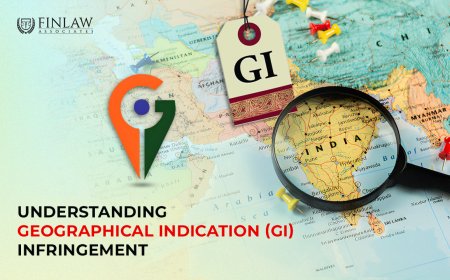Intellectual Property Rights Bare Acts in India: Complete List
Complete list of Intellectual Property Rights Bare Acts in India. Understand key IP laws to protect patents, trademarks, copyrights, and designs.

Intellectual Property Rights (IPR) form the backbone of innovation and creativity in India’s rapidly evolving economy. Whether you are an entrepreneur, artist, researcher, or legal professional, understanding the intellectual property rights bare act is vital to protect your creations and innovations. These bare acts are the original legal texts enacted by the Indian Parliament, serving as the authoritative source of IP laws in India.
This article presents a complete list of Intellectual Property Rights bare acts in India, along with detailed insights into their scope, application, and importance. Whether you want to safeguard a patent, trademark, or design, this guide will equip you with the fundamental knowledge needed to navigate India’s IP landscape.
What is the Intellectual Property Rights Bare Act?
A bare act is the unaltered text of a statute, exactly as it was passed by the legislature, without any commentary, case law, or interpretation. For legal experts, students, and IP practitioners, bare acts are indispensable for understanding the letter of the law directly from the source.
In the context of intellectual property, the bare acts cover all legislations related to the protection, registration, and enforcement of rights over creations of the mind, including inventions, brands, artistic works, and more.
Why is Knowing the Intellectual Property Rights Bare Act Crucial?
-
Legal Accuracy: Bare acts ensure you rely on the exact legal language.
-
Reference for Litigation: Courts base decisions on the statutory text.
-
Clarity on Rights & Obligations: Understand your rights and duties under IP laws.
-
Avoid Legal Missteps: Helps businesses comply with IP laws and avoid infringement.
-
Foundation for IP Strategy: Key to building IP portfolios and enforcement plans.
Detailed List of Intellectual Property Rights Bare Acts in India
1. The Patents Act, 1970
The cornerstone of patent law in India, this act defines the procedure for patent grant, rights of patentees, and patent infringement penalties.
Key Highlights:
-
Patent protection lasts for 20 years from the filing date.
-
Includes provisions for compulsory licensing under certain conditions.
-
Covers patent opposition and revocation processes.
Significance: Enables inventors to exclude others from using their inventions commercially, encouraging R&D.
2. The Trade Marks Act, 1999
This act protects signs, logos, brand names, and any marks that distinguish goods or services.
Key Highlights:
-
Registration provides exclusive rights for 10 years, renewable indefinitely.
-
Protects against unauthorized use and counterfeit products.
-
Provides mechanisms for opposition and cancellation of marks.
Significance: Crucial for brand owners to build and maintain market identity and consumer trust.
3. The Copyright Act, 1957
Governs the protection of original literary, artistic, musical, cinematographic works, and software.
Key Highlights:
-
Copyright duration varies, generally lifetime of the author plus 60 years.
-
Protects both economic rights and moral rights of authors.
-
Covers digital rights management and infringement penalties.
Significance: Vital for authors, artists, musicians, and software developers to secure and monetize their creations.
4. The Designs Act, 2000
Protects the unique visual design of products and objects.
Key Highlights:
-
Protection is granted for 10 years initially, extendable by 5 years.
-
Only the appearance or aesthetic aspect is protected, not technical features.
-
Applicable to a wide range of products from textiles to electronics.
Significance: Helps companies prevent copying of their product’s unique looks, supporting brand differentiation.
5. The Geographical Indications of Goods (Registration and Protection) Act, 1999
Covers products that have a specific geographical origin and possess qualities or reputation due to that origin.
Key Highlights:
-
Protects agricultural, natural, and manufactured goods.
-
Registration lasts 10 years, renewable.
-
Examples include famous Indian products like Darjeeling Tea and Mysore Silk.
Significance: Supports rural artisans and local producers by legally preserving their unique regional identities.
6. The Semiconductor Integrated Circuits Layout-Design Act, 2000
Protects original topographies (layouts) of semiconductor chips.
Key Highlights:
-
Exclusive rights for 10 years.
-
Addresses unauthorized copying and commercial exploitation.
Significance: Supports India’s growing semiconductor and electronics industries.
How to Access the Intellectual Property Rights Bare Acts in India
You can download the latest versions of the bare acts from official sources such as:
Access to bare acts is free, ensuring transparency and enabling stakeholders to understand IP laws firsthand.
Recent Amendments & Trends in Intellectual Property Rights in India
India’s IP laws have evolved with international treaties like TRIPS and technological advances.
-
Digitization: E-filing of patents, trademarks, and copyrights for faster processing.
-
Stronger Enforcement: Enhanced penalties for infringement, including cyber violations.
-
Startup Friendly Policies: Simplified patent filing and fee concessions for startups.
-
Geographical Indication Expansion: More local products gaining GI status, boosting exports.
FAQs on Intellectual Property Rights Bare Acts in India
Q1. Can I rely solely on the bare act for IP registration?
While bare acts provide the legal foundation, practical IP registration involves detailed procedural guidelines, rules, and expert interpretation.
Q2. Are bare acts updated regularly?
Yes, amendments are incorporated periodically. Always refer to the latest official version.
Q3. Can foreign nationals apply for IP protection under these acts?
Yes, India allows foreign applicants under international treaties like the Paris Convention and PCT.
Q4. How long does it take to get a patent in India?
Typically 2 to 5 years, depending on the complexity and examination process.
How Businesses and Creators Can Benefit From Understanding IPR Bare Acts
-
Avoid IP Disputes: Clear knowledge reduces accidental infringement.
-
Strategic IP Filing: Properly navigating bare acts leads to better patent/trademark applications.
-
Legal Compliance: Helps in drafting contracts, licensing, and technology transfers.
-
Investor Confidence: Strong IP protection attracts investment and partnerships.
Conclusion
Mastering the intellectual property rights bare act is essential for safeguarding innovations, brands, and creative works in India. This article’s detailed list and insights provide a valuable starting point for anyone dealing with IP rights.
India’s IP framework is continuously improving to support innovators and creators in the global marketplace. Whether you are filing a patent or defending a trademark, the bare acts are your most authoritative resource.
By combining knowledge of the bare acts with expert guidance, you can protect your intellectual assets effectively and contribute to India’s thriving innovation ecosystem.
What's Your Reaction?















